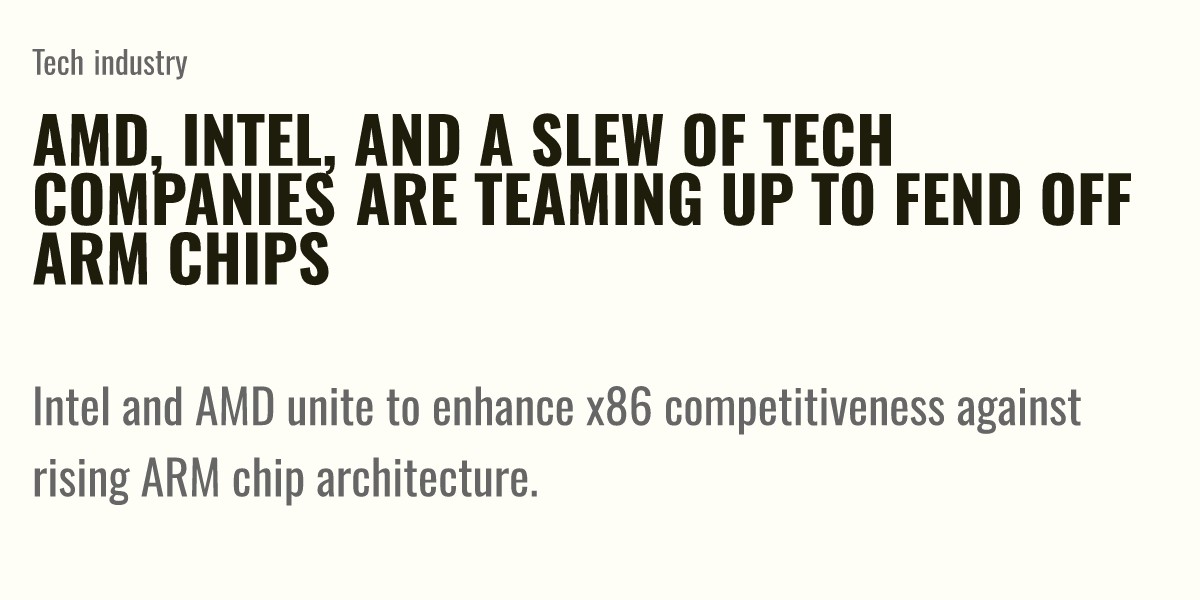
In an unprecedented move, long-standing rivals AMD and Intel are joining forces with other tech industry heavyweights to defend their x86 platform against the rising threat of ARM-based chips. This strategic alliance, known as the x86 Advisory Group, was unveiled at Lenovo's Tech World 2024 conference in Bellevue, Washington.
The group's formation comes as ARM chips gain significant traction in the computing market. Apple's successful transition to its own ARM-based silicon and Qualcomm's recent breakthroughs in ARM chip design for Windows machines have undoubtedly rattled the x86 giants.
Among the founding members of this new coalition are tech behemoths Microsoft, Google, and Meta, alongside hardware manufacturer Lenovo. The diverse membership underscores the widespread concern about ARM's growing influence in the industry.
Officially, the x86 Advisory Group aims to "enhance compatibility, predictability and consistency across x86 product offerings." They plan to engage with x86 hardware and software developers to create standardized interfaces across AMD and Intel's product lines.
However, industry observers see this move as more than just a technical collaboration. It's viewed as a clear signal to developers, customers, and investors that the x86 camp is actively responding to the ARM challenge.
The formation of this group highlights the shifting dynamics in the chip industry. For decades, x86 architecture has dominated the personal computing and server markets. However, ARM's energy efficiency and performance gains have made it an increasingly attractive alternative, especially in mobile devices and now expanding into traditional PC territory.
As Qualcomm continues to make strides with its ARM-based chips for Windows devices, and Apple showcases the potential of custom ARM designs, AMD and Intel face mounting pressure to innovate and defend their market share.
The x86 Advisory Group's success will depend on its ability to streamline development processes, improve performance, and demonstrate the continued relevance of x86 architecture in an increasingly ARM-friendly world. As this tech rivalry unfolds, consumers and businesses alike may benefit from increased competition and innovation in the chip market.